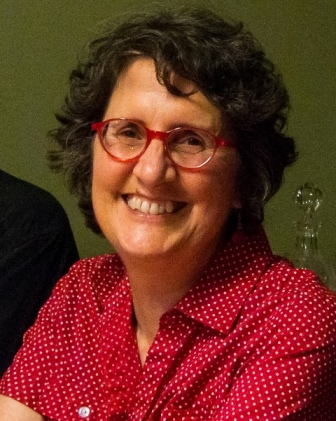Title IX advocates say Black Lives Matter
A professional association of Title IX administrators recently proclaimed solidarity with the Black Lives Matter movement. Meanwhile, a federal lawsuit in Minnesota claims that protecting transgender students’ rights amounts to discrimination against girls under Title IX. The intersections between discrimination based on sex, race, gender, sexual orientation, religion, ethnicity, age, disability, etc. — and how these intersections are used to try to achieve political goals — have always been part of Title IX history. Perhaps never more so than today.
The statement released by the Association of Title IX Administrators (ATIXA) generated a standing ovation when first read at its annual conference last month. “ATIXA stands in support of the essential truth that Black Lives Matter,” it says in part. “Through its civil rights commitment, ATIXA recognizes the frequency of compound discrimination in this work, the perniciousness of systemic racism, and the intersectionality of various forms of hatred and oppression. Racism impacts all of us and therefore all of us are obligated to rededicate ourselves to equality.”
ATIXA’s members are seeing an increase in reported incidents involving a crossover between various forms of discrimination, says Daniel Swinton, senior associate executive director of the group. A gay male African-American student may be harassed for behaving in what the harassers consider an effeminate manner that they think is inappropriate for a black man, for example. Or, female students from some cultures may be harassed if they don’t fit cultural expectations of how women should or shouldn’t behave or dress. Harassment or discrimination against female students or staff with disabilities may fall under Title IX and/or laws protecting the disabled.
“A lot of the folks who do the Title IX work also do work with other forms of harassment discrimination,” Swinton says. At many institutions, the Title IX administrator is a part-time job added to other duties. The requirement that educational institutions have Title IX administrators at all was the brainchild of veteran women’s rights advocate and Title IX “godmother” Bernice Sandler. When she directed the Project on the Status and Education of Women at the Association of American Colleges and Universities, her office produced one of the first reports on African-American women in higher education, decades ago. She has been on the advisory board of ATIXA since its founding in 2011, shortly before police killings of unarmed black citizens sparked the Black Lives Matter movement.
Around the same time that female staff started agitating at the Ford Foundation in the early 1970s, minority women on the staff were some of the first to push for gender equity and to press Ford for greater focus on people of color in its programs and hiring. Kathryn Mitchell, Carmen Turay, and other women of color there formed Minority Women at Ford and also worked within groups of predominantly white women at Ford to make sure their activities included minority issues. The Foundation became a major backer of Title IX activists and increased its attention to minority women’s issues. (See Susan M. Hartmann’s The Other Feminists: Activists in the Liberal Establishment, Yale University Press, 1998, pp. 138-139).
An African-American woman was the only plaintiff not to be dismissed in the first lawsuit about sexual harassment under Title IX, in 1976. (Alexander v. Yale, which became Price v. Yale.) For Pamela Price, the sexual discrimination went hand in hand with racial discrimination by a professor who she said offered a good grade if she would have sex with him. Price declined, and got a “C.” “This grade is a concrete expression of his racist and sexist appraisal of me as a person — in my case the one attitude is inherently linked with the other,” she said in court filings that I read at the Schlesinger Library on the History of Women in America.
Claims of intersectionality can crop up in unexpected ways. The conservative Alliance Defending Freedom recently sued the U.S. Department of Education and the U.S. Department of Justice, saying that Title IX protections of transgender students’ rights amount to an invasion of privacy and sex discrimination against some cisgender girls who do not want a transgender girl using the same locker room. Alexandra Brodsky, a co-founder of Know Your IX who’s now a fellow at the National Women’s Law Center, lays out the convoluted legal strategy in a New York Times op-ed article, “Don’t Use Girls as Props to Fight Trans Rights.”
The same month, queer rights activists used Title IX to support a lawsuit against anti-gay laws in Utah. The National Center for Lesbian Rights sued Utah’s educational system over state laws prohibiting instruction, speech, or activities deemed positive about “homosexuality.” The suit claims that the laws violate students’ Constitutional rights and force local school districts to violate Title IX by denying equal educational opportunities to lesbian, gay, bisexual, and transgender students, the Title IX Blog reported.
The intersections keep coming. Black girls today are suspended from school six times more often than white girls, a disparity double the size of the gap for boys — black boys are three times more likely to be suspended than white boys. The American Civil Liberties Union (ACLU) has challenged the District of Columbia for spending $20 million on a program to boost the academic performance of minority boys — but not girls, even though minority girls also lag behind whites in academic achievement. The ACLU’s “Leaving Girls Behind” report argues that it’s unfair to target help only to minority boys instead of all minority students.
With the proliferation of Title IX cases since 2011, the development of Black Lives Matter, and progress toward queer rights, we’ve witnessed in the past 5 years a resurgence in U.S. civil rights movements that feels more vibrant than at any time since the 1960s and 1970s. Acknowledging the intersections can help these movements move forward together and, hopefully, work through any traffic jams that arise where causes converge.









